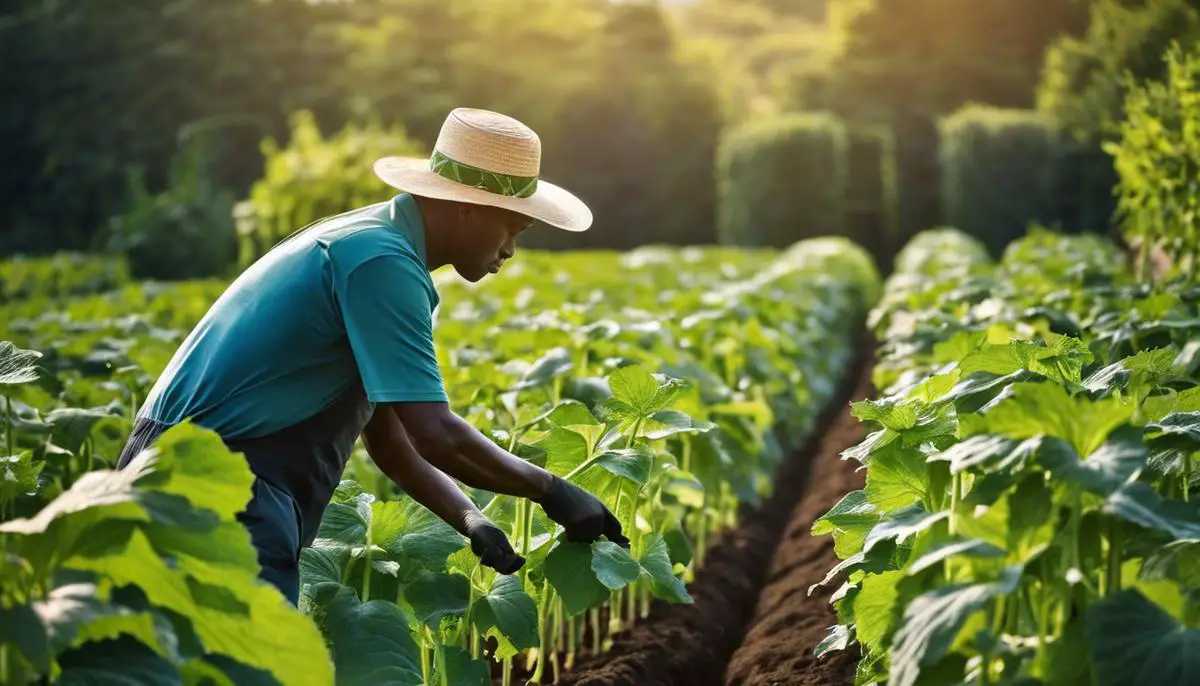Embracing organic and sustainable farming methodologies stands at the forefront of modern agricultural practices, and no crop encapsulates this trend better than the versatile cucumber. A favorite for many gardeners, cucumbers flourish under a variety of conditions, making them ideal for organic cultivation. With the constant rise in consumer awareness about where and how food is grown, understanding the intricacies of organic cucumber cultivation can be immensely rewarding. This informative guide covers everything from selecting the apt cucumber variety, soil preparation and planting techniques, organic pest and disease control, to proper harvesting and storage. So, whether you are a hobby gardener or commercial grower, strap yourself in for an enlightening journey through the world of organic cucumber cultivation.
Understanding Organic Cultivation
Understanding Organic Cultivation: The Beauty behind Its Importance
Organic cultivation has been a supercharged keyword in farming circles for the past few decades. Whether you’re a veteran hobbyist grower or just starting in the vast terrain of home gardening, there’s no escaping the allure of growing plants the organic way. Yes, you’ve probably heard or read about organic farming repeatedly, but what exactly is it and why is it turning heads in gardens and farms around the United States and the world over?
Reader Poll: What online courses would interest you?
In essence, organic cultivation is a method of farming that relies on natural processes and substances instead of synthetic fertilizers, pesticides, and genetically modified organisms (GMOs). The use of these natural substances ensures sustainability, fosters soil health, and safeguards biodiversity. It’s not so much the absence of synthetic inputs as it is the ethos of working in harmony with nature. Think of it this way: it’s like helping the earth to help us.
So, how does organic cultivation stand out from the crowd? One major point is soil health. Just as we need healthy bodies to function optimally, plants rely on nutritious soil teeming with bacteria, fungi, and other microorganisms that help roots absorb nutrients more efficiently. Traditional farming methods can deplete these valuable organisms over time. But, under the principles of organic cultivation, the soil’s health and fertility are nurtured and preserved, providing a welcoming environment for these beneficial microorganisms.
Another star feature is biodiversity. Organic farming does not only cater to the lone crops planted in the garden. It tries to foster a thriving mini-ecosystem, housing critters, creepy crawlies, and pollinators that can aid in pest control and pollination. In simple terms, it’s a proactive community-building approach in the garden.
Subscribe to our newsletter!
When gardeners adopt organic cultivation methods, they’re essentially partnering with Mother Nature. Rather than fighting against her with potentially harmful chemicals, they’re working with her, allowing her to use her immense natural power to give life to sustainable, healthy, and truly vibrant gardens or farms.
But what’s more captivating about organic cultivation? It’s the healthful benefits that organically grown fruits, vegetables, and herbs bring to the table. Due to their exposure to a natural, chemical-free environment, they often contain higher levels of beneficial vitamins, minerals, and antioxidants than their conventionally grown counterparts. Plus, simply knowing that the produce is free from harmful synthetic substances brings peace of mind.
Now, the world is slowly waking up to the practicality and benefits of organic cultivation. Consumers are increasingly seeking organic produce, and many farmers are answering the call. It’s clear organic farming is no longer a trend; it’s gaining momentum and is here to stay.
So, as curious onlookers, hobbyists, or even future farmers, exploring and understanding the beauty behind organic cultivation is not just an enlightening journey; it’s a step toward a healthier, sustainable, and brighter future. Talk about sowing seeds of change, right?

Choosing the Right Cucumber Variety
Discovering the Best Varieties of Cucumbers for Organic Cultivation
If anyone has a green thumb and an insatiable passion for organic cultivation, they’re well aware of the charm and benefits of growing their produce. Notably, the cucumber is one such versatile, popular, and refreshing vegetable that often marks its presence in the organic kitchen garden. Sleek, green, and crunchy, cucumbers are a favorite of many, but the question remains: Which cucumber variety is prime for organic cultivation?
Two main types of cucumber varieties might come to mind: slicing and pickling. While both have their unique attributes, their growth can be influenced significantly by organic farming methods.
First off, slicing cucumbers are the regular garden variety that you often see in grocery stores. They are best for salads and sandwiches due to their larger size and thick skin. Notable organic-friendly varieties in this group are the Straight Eight and Marketmore. Both are known for their resistance to common cucumber diseases such as powdery mildew and cucumber mosaic virus. These varieties are typically vine cucumbers that require a lot of space or a trellis for vertical growth.
Straight Eight cucumbers, as the name suggests, are known for producing straight, 6-8 inch long fruits. They are resilient, prolific, and have a reputation for being crisp and delicious with a small seed cavity. Marketmore, on the other hand, is renowned for being a slow and steady producer throughout the growing season. Its fruits have a sweet and mild flavor and are perfect for backyard gardeners who prefer steady production over the course of the season.
Then come the pickling cucumbers which are smaller, have thinner skin, and are ideal for making pickles – though they can surely be eaten fresh too. The pickling variety that stands out in organic cultivation is the National Pickling cucumber. Universally acclaimed for their knack in becoming excellent pickles, these cucumbers are shorter, stout, and possess a characteristic bumpy skin. Importantly, this variety is disease-resistant, making it an excellent fit for organic cultivation – a perfect trait for hobbyists aiming to grow cucumbers without chemical interventions.
Additionally, it’s vital to mention the uniqueness of heirloom cucumbers like the Lemon cucumber. This Sweet, round, and yellow cucumber breaks the mold and adds a delightful diversity of flavor and color to the plate. They bear the name because of their lemon-like appearance, not because of the taste. They are highly productive, easy to grow, and their plants are quite disease resistant.
Organic cultivation is about balancing nature’s toolbox with our gardening practices. Therefore, choosing environmentally supple and resilient cucumber varieties, like the ones mentioned above, helps to stave off plant disease and pests without resorting to synthetic inputs. So, keen gardeners, armed with this information, can plunge their hands into the soil, knowing they’re cultivating not just cucumbers, but a healthier, more sustainable world. Let the gardening journey bring forth the refreshing crunch and flavor of organically grown cucumbers right from your backyard.
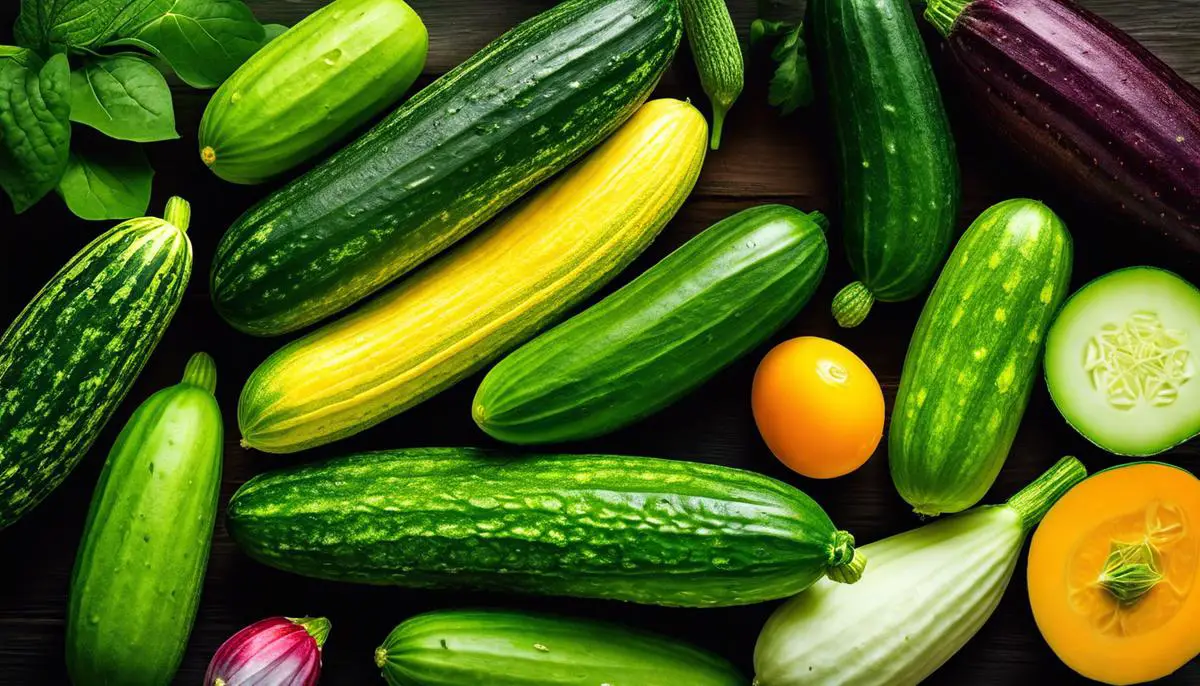
Preparation and Planting Techniques
Shifting gears from an intensive discourse on the principles and benefits of organic farming, let’s now dive into a more practical task. We’ve already highlighted the intricacies of suitable cucumber varieties and why organic cultivation is useful in sustaining a healthier lifestyle. Buckle up as we now delve into exploring the nuances of organic soil preparation and planting strategies specifically for cucumbers.
The organic cultivation of cucumbers, as nuanced as it may sound, merely starts with soil preparation. The old adage “as healthy as the ground beneath us” rings true here. Cucumbers love loose, crumbly, and fertile soil with a pH range of 6.0 to 6.8. It’s crucial to integrate plenty of compost or rotted manure into the soil before planting, ensuring nutrient-rich ground where organic cucumbers will thrive.
Now, for an organic garden, the compost serves two purposes. It not only supplies the plant with necessary nutrients but also introduces beneficial microorganisms that can out-compete disease-causing organisms. This detail ties back to our previous conversation on promoting biodiversity in organic farming – a critical aspect of successful yields in any organic garden.
One can go a step further by incorporating cover crops during fall or in between growing seasons. These crops dramatically enhance the organic content and structure of the soil, serving to act as the green manure, which is invaluable for organic farming. Commonly used cover crops are Rye, Buckwheat, or a mixture of legumes.
When it’s about time to plant, consider whether you’re working with seedlings raised indoors or direct-seeded cucumbers. Crops from seedling require extra care; ensure the soil has sufficiently warmed before transferring these little plants into the garden. Nothing starts the growing season off on a bad foot quite like a batch of seedlings stunned by a sudden, cold shock. Planting seedlings a couple of weeks after the last spring frost, when soil temperatures are around 70°F, is typically a safe bet.
On the other hand, when direct-seeding, plant seeds one inch deep and about 18-36 inches apart in rows set 5-6 feet apart. Plant 2-3 seeds per hole, then thin back to the vigorousest plant after germination is complete. Also, don’t forget to water it well. The soil needs to be moist, but not waterlogged, to ensure successful germination.
A layer of organically-sourced straw mulch can control weeds, moderate soil temperature, and retain moisture, ensuring the cucumber’s environment remains optimal.
While it’s a common practice to train cucumber vines up trellises, this isn’t always necessary. There are bush varieties perfect for container cultivation or smaller spaces. If you choose a climbing variety, however, providing a sturdy trellis at planting time is crucial. Not only can this lead to healthier plants and better yields, but it can also prevent diseases such as powdery mildew by improving airflow around the plants.
In this journey of ensuring fruitful yield, one understands the symbiotic relationship with mother nature while continually developing skills for organic cultivation. Besides, there’s nothing quite as satisfying as biting into a crisp, organic cucumber that you’ve grown in your own backyard.
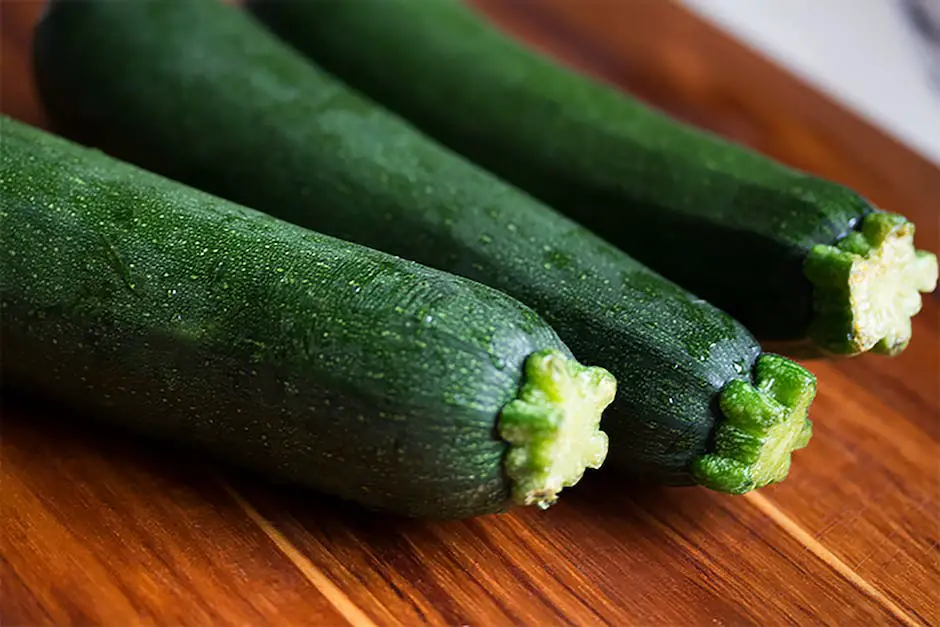
Organic Pest and Disease Management
Diving into the topic at hand, it’s essential to talk about pest and disease management in an organic cucumber garden. Organic products are also hugely impacted by pests and diseases, but dealing with these issues without compromising organic principles might seem tricky. However, it’s not as daunting as one might think with a few manageable measures.
Understanding common pests and diseases is the first step in organic pest management. Cucumbers are typically susceptible to attacks from cucumber beetles, aphids, and powdery mildew. Each pest and disease present unique signs. For instance, cucumber beetles can be spotted by their yellow bodies with black stripes or spots. Aphids have small, pear-shaped bodies with long antennas, and they leave behind a sticky residue called honeydew. Powdery mildew, a common disease, surfaces as white, powdery spots on leaves and stems.
Once these pests and diseases are identified, combatting them organically involves multiple strategies. Implementing natural predators is a brilliant example of pest control while maintaining biodiversity. Ladybugs and lacewings are natural predators that control aphids, and planting yarrow, dill, fennel, and tansy can attract them. Cucumber beetles can be controlled by applying kaolin clay on the plant’s surfaces as a deterrent, or cottonseed oil, a natural pesticide that interferes with the insect’s feeding, growth, and egg-laying.
Crop rotation is another critical tactic in disease management. Not planting cucumbers repeatedly in the same bed or area will break the disease cycle. Organic fungicides can also control powdery mildew. Concoctions of baking soda and water, milk, or neem oil sprays have shown effectiveness in dealing with this disease.
Trap cropping is a valuable strategy where a plant, attracting the pests, is planted around the crop. Pests attack the trap crop first, protecting the main crop. Radishes are a perfect trap crop for cucumber beetles. Ensure these trap crops are removed and destroyed after they’ve done their job, preventing any further breeding of pests.
Physical barriers, like row covers, can be used to protect young plants. However, this should be removed when flowering starts to allow pollination. If physical barriers are not an option, consider intercropping with strong-smelling plants like marigold and nasturtium. These not only repel pests but draw beneficial insects to help with pollination.
Last but not least, maintaining a healthy garden environment invites natural pest predators and strengthens plant immunity. Regular watering, balanced fertilization with organic compost, regular weeding without disturbing the root system are all integral to keeping the garden thriving.
In essence, pest and disease management in an organic cucumber garden involves understanding pests and diseases, proper planning, nurturing natural predators, and maintaining crop health through organic practices. This way, not only are cucumbers organically protected, but every crunchy bite also contributes positively to the broader ecosystem.
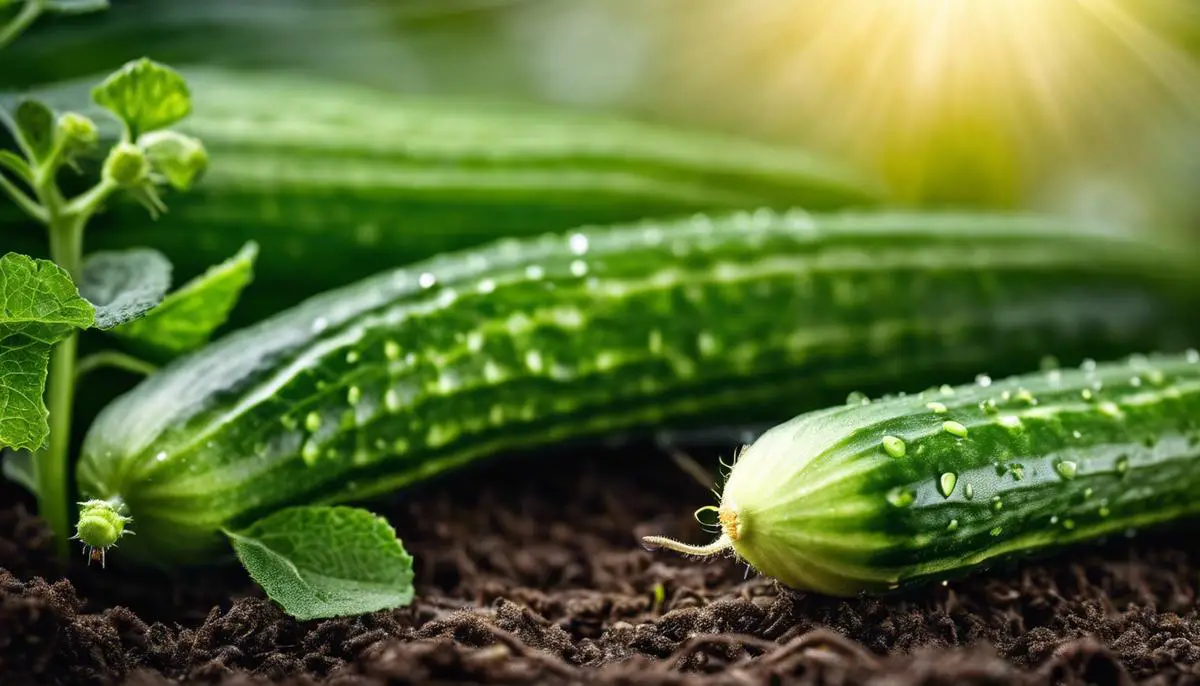
Harvesting and Storing Your Cucumbers
In our horticultural exploration thus far, the wealth of organic cucumber cultivation knowledge gathered is vast. We’ve touched on soil preparation, planting techniques and even how to create an ecological balance working alongside nature. Now it’s time to pass our gaze onto the topic of harvesting the fruits of our labor, quite literally, and how to store these great cucumbers to enjoy them later.
Harvesting cucumbers should be done carefully with some keen observations. Cucumbers ready for picking will generally be firm to the touch and have a bright even complexion. For slicing cucumbers like Straight Eight or Marketmore, the required size is usually around 7 to 9 inches long. The National Pickling cucumber and the unique Lemon cucumber will be ready when they hit around 5 to 6 inches in length and have reached an even, ripe topping coloration. The timing for these cucumbers may be slightly different due to their specific growth times and the environmental conditions affecting the plants.
An essential part of organic cucumber cultivation is cutting the cucumber from the vine rather than pulling it off. A sharp pair of pruning shears or a knife will do the trick. Make sure a small stub of the stem is left on the cucumber, protecting it from potential invasion of disease organisms or spoilage. Of course, regular cleaning and disinfection of your harvesting tools help in keeping the cucumber healthy post-harvest.
Harvesting your cucumbers as they mature not only provides you with crisp, tasty vegetables, but it also encourages your plants to create more. In other words, the more you pick, the more they produce. Therefore, frequent harvesting would be a great way to boost your overall production.
The storage aspect of the cucumber is another core part of successful organic cultivation that should be understood. Cucumbers tend to be a bit sensitive when it comes to storage and have a relatively short lifespan after being picked. It’s preferable to consume these green goodies as soon as possible to enjoy their fresh crunch and taste. However, if storage is necessary, there are ways to ensure their quality.
Cucumbers, unlike many fruits and veggies, do not appreciate cold temperatures. As such, they never make it to the bottom draws of the fridge. Instead, they should be kept at a cool room temperature. They will comfortably sit outside the fridge in a well-ventilated and shady place for about three to five days. Maintaining humidity around cucumbers is important as it helps them remain crisp. If refrigeration is a must,
it’s recommended to wrap cucumbers in a dry towel and then put them in a plastic bag to create a micro-environment that keeps them from getting too cold and maintaining humidity level, thereby preventing moisture loss and extending their crispness.
For long-term storage, slicing cucumber varieties can be pickled and stored for months without losing their taste or crunchiness. Both pickling and canning are remarkable ways to prolong the life of cucumbers with the added benefit of flavor enhancement.
Implementing proper harvesting and storage procedures for cucumbers grown organically ensures that the time, effort, and love poured into cultivating these cucumbers can be savored to the fullest. Fresh, crisp, delicious cucumbers straight from the garden, kept in the best condition for consumption as and when wanted, is the power of good harvesting and storage knowledge. Happy gardening!
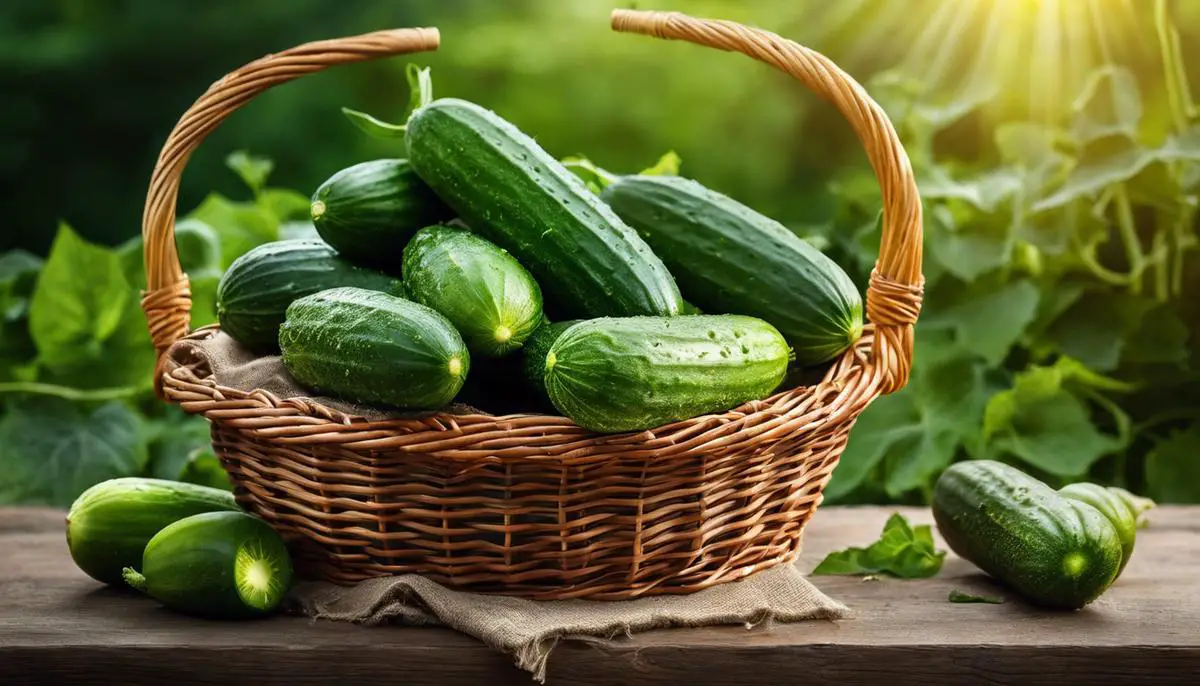
As we journeyed through the dynamics of organic cucumber cultivation, we learned that it is much more than just about pest control and yield. It’s about environmental stewardship and sustainable living, about embracing a way of life that respects the natural world. With the right cucumber variety in the best prepared soil, practicing thoughtful pest control, and understanding correct harvesting and storage techniques, organic lime cultivation becomes more than a hobby – it’s a rewarding investment that benefits your health, palate, and our planet. So whether you’re a novice or a seasoned pro, remember, every organic cucumber you grow is a step towards a greener, healthier, and more sustainable future.

